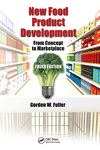Keeping up with the e-commerce expansion






As consumers demand greater convenience, e-commerce sales continue to rise. According to the 2019 Internet Retailer Top 1000 Report, consumers spent $517.36 billion online with U.S. merchants in 2018, up from $449.88 billion spent the year prior. Even when the final sales takes place in a store rather than online, the first step to most purchase decisions starts at the search bar.
As e-commerce platforms continue to grow, brands face the prospect of SKU proliferation and the challenges of ensuring products reach consumers in excellent condition. As manufacturers and brand owners take on increasingly complex supply chains with fast-changing needs and opportunities, it is critical for them to understand and equip themselves with the right solutions to remain competitive.
Different solutions for different channels
Whether companies sell to consumers through their own online channels or third parties like Amazon, flexibility is critical to meet market shifts. Without the right tools and infrastructure to enable faster changeovers, diverse batch runs and fluctuating volumes, brands may not be adequately prepared to meet product demand surges in a less predictable marketplace. This means investing in solutions like digital printing presses that can handle changeover and small volume needs—or automated packaging equipment that handles different package formats, sizes and shapes.
Additionally, companies are updating packaging to better suit e-commerce needs, sometimes offering two iterations of a product’s package: one for store shelves and another for e-commerce. This dual approach to package design is evidence that traditional retail is still very much alive despite the growth and change that e-commerce has brought. In fact, according to the TimeTrade 2017 State of Retail survey report, more than 70 percent of consumers say they prefer to shop in a brick-and-mortar store compared to an online retailer. This attitude drives brands to consider adopting omnichannel distribution and, rather than creating variations of packaging for the same product, commit to one package design that meets all their needs from shelf appeal to lightweighting.
While the omnichannel approach could simplify production and save cost since it eliminates the need to run separate lines for products only applicable to one channel, CPGs utilizing it are faced with tight order fulfillment timeframes, as customers now expect two-day shipping. According to PMMI’s Omnichannel Retail whitepaper, brands can address these logistical concerns by instituting distribution facilities as close to the consumer as possible or partnering with logistics facilities across the country.
Combatting counterfeiters & challenging environments
While e-commerce affords consumers a convenient purchase experience and provides brands the opportunity to reach target geographies far and wide, it also creates vulnerabilities to counterfeiting—especially when retailing through third-party channels. When consumers receive a knock-off instead of the true product, disparities in quality, performance or even product safety are detrimental to brand integrity.
To mitigate counterfeiting, brands maintain authenticity by implementing overt security features into their packaging. For example, companies have begun to include tamper-evident labels that allow consumers to distinguish the true product from an imitation. This includes the use of hologram films to create packaging that can differentiate a product at the point of sale. Additionally, manufacturers can include visual effects to the hologram such as emerging images, microletters or other microscopic symbols. Consumers can discern the true product from the imitation by inspecting the label for distinctive marks that were imbedded by the original equipment manufacturer. Brands can also alter the product beyond the label by incorporating symbols onto the product. Apple, for example, places small text on their lightning connectors, among other measures to help signify to consumers the product’s authenticity.
In an e-commerce, shipping product through challenging environments—where the brands have little control—can result in damaged products as well as displeased consumers. When selecting materials and containers, it is crucial to account for durability in the face of tough conditions such as friction or impact from other loose goods contained in the same package, moisture, fluctuating temperatures and even vibration. Increasingly, companies have utilized both rigid and flexible plastic packaging to better protect their products. This is because plastic packaging is durable enough to prevent product damage without the risk of breakage that comes with glass.
Maximizing brand differentiation
Amid the rise of e-commerce, more brands must connect with consumers in ways that are different from the traditional retail settings where shelf impact can lead to sales. Consumers increasingly interact with brands online, basing purchase decisions on reviews and seeking unique brand experiences. In response, brands are offering greater opportunities for personalization. According to “The Deloitte Consumer Review Made-to-order: The Rise of Mass Personalization Report,” 70 percent or respondents reported that they are willing to pay a 10 percent premium or more on personalized products. Whether building a made-to-order product or simply customizing lettering, colors and flavors—or adding messages to specially gift-wrapped items, consumers increasingly expect opportunities for personalization and customization.
The resulting explosion of SKUs requires companies to supply a greater variety of products at smaller quantities which can be difficult if using a traditional printing press. Traditional presses are designed to run larger batch sizes and thus have the potential to create waste by producing an excess number of units for a certain promotion, seasonal item or customized design.
As an alternative to traditional printing presses, manufacturers can utilize digital package printing technologies, to produce high-quality, detailed packaging that reinforce brand image. The technology enables greater flexibility for faster changeover between designs. As such manufacturers can better stock shelves in a timely fashion with products tied to seasons, holidays and special events, satisfying the need for managing multiple SKUs.
Digital printing can also be used to create differentiating designs in e-commerce. This channel presents unique branding opportunities for companies to engage consumers during the first contact with cartonboard boxes used to deliver their goods. Businesses can seize a new branding opportunity by promoting other product lines on the box or selling the space to other companies. Integrating interactive features onto the cartonboard that promote a customized feeling can also help drive consumers to a brand’s website and simply increase awareness.
Finding e-commerce solutions at PACK EXPO East
E-commerce and omnichannel marketing are less of an option and more of a requirement today to remain competitive. Manufacturers and brands can keep up with new industry trends, insights and technologies to implement by visiting PACK EXPO East (March 3-5, 2020, Philadelphia Convention Center). Owned and produced by PMMI, The Association of Processing and Packaging Technologies, the show offers attendees the opportunity to see the latest e-commerce solutions for manufacturers’ operations from more than 400 exhibiting companies. The show will also offer educational programming and opportunities as well as feature up to 7,000 attendees to network with industry peers.
Register and learn more at www.packexpoeast.com.
Looking for a reprint of this article?
From high-res PDFs to custom plaques, order your copy today!












